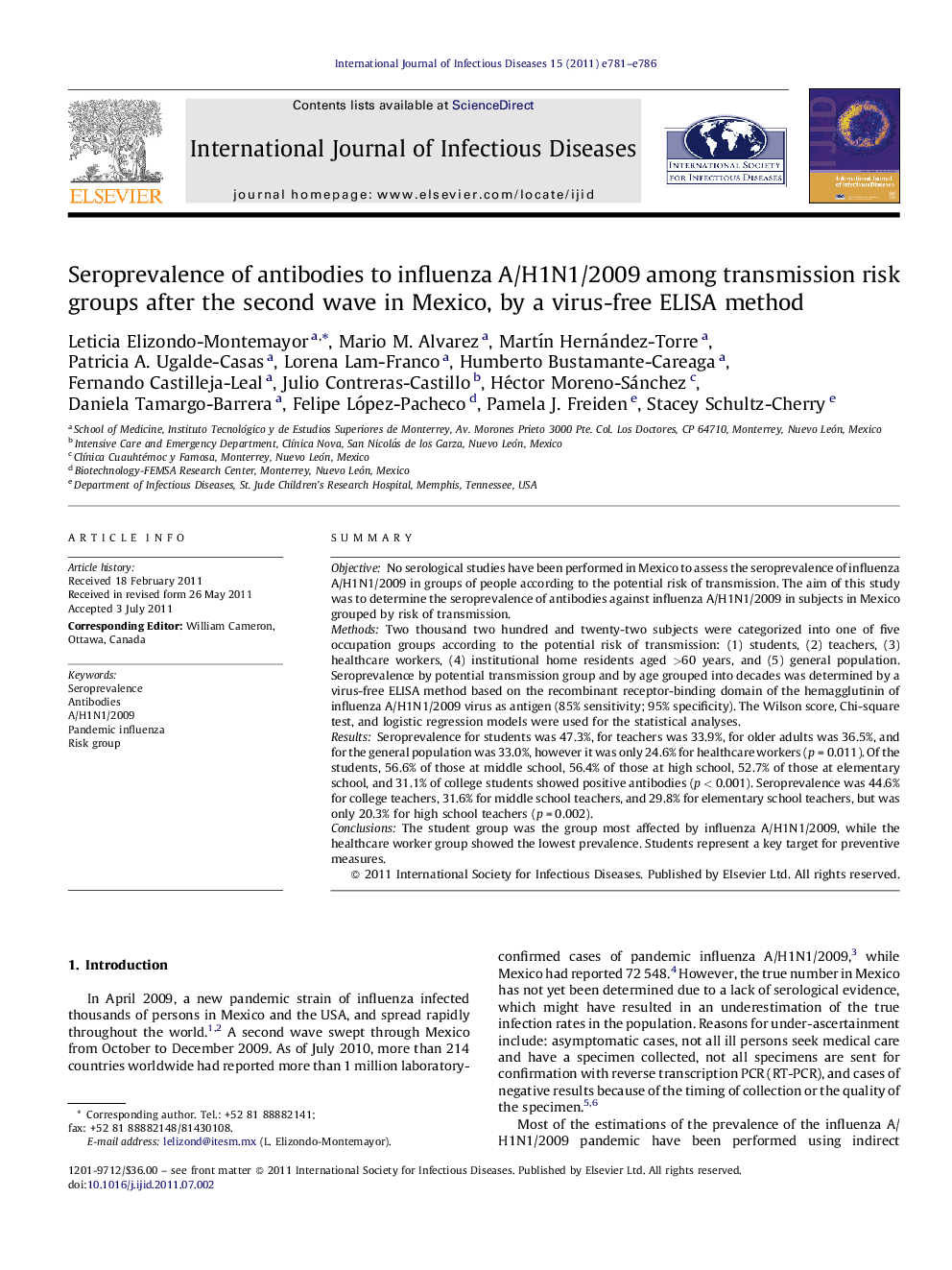| کد مقاله | کد نشریه | سال انتشار | مقاله انگلیسی | نسخه تمام متن |
|---|---|---|---|---|
| 3363487 | 1592105 | 2011 | 6 صفحه PDF | دانلود رایگان |

SummaryObjectiveNo serological studies have been performed in Mexico to assess the seroprevalence of influenza A/H1N1/2009 in groups of people according to the potential risk of transmission. The aim of this study was to determine the seroprevalence of antibodies against influenza A/H1N1/2009 in subjects in Mexico grouped by risk of transmission.MethodsTwo thousand two hundred and twenty-two subjects were categorized into one of five occupation groups according to the potential risk of transmission: (1) students, (2) teachers, (3) healthcare workers, (4) institutional home residents aged >60 years, and (5) general population. Seroprevalence by potential transmission group and by age grouped into decades was determined by a virus-free ELISA method based on the recombinant receptor-binding domain of the hemagglutinin of influenza A/H1N1/2009 virus as antigen (85% sensitivity; 95% specificity). The Wilson score, Chi-square test, and logistic regression models were used for the statistical analyses.ResultsSeroprevalence for students was 47.3%, for teachers was 33.9%, for older adults was 36.5%, and for the general population was 33.0%, however it was only 24.6% for healthcare workers (p = 0.011). Of the students, 56.6% of those at middle school, 56.4% of those at high school, 52.7% of those at elementary school, and 31.1% of college students showed positive antibodies (p < 0.001). Seroprevalence was 44.6% for college teachers, 31.6% for middle school teachers, and 29.8% for elementary school teachers, but was only 20.3% for high school teachers (p = 0.002).ConclusionsThe student group was the group most affected by influenza A/H1N1/2009, while the healthcare worker group showed the lowest prevalence. Students represent a key target for preventive measures.
Journal: International Journal of Infectious Diseases - Volume 15, Issue 11, November 2011, Pages e781–e786